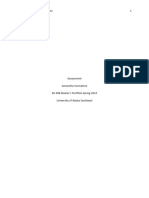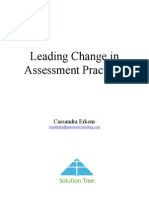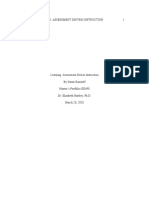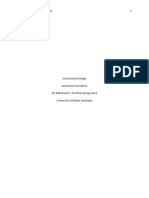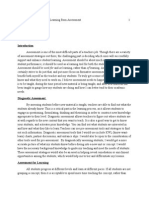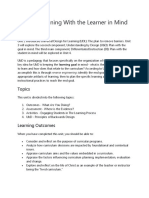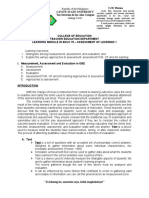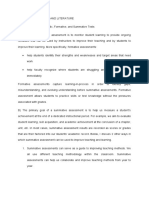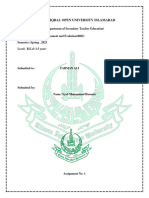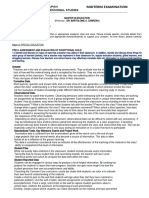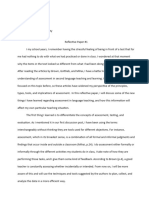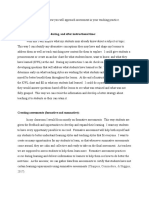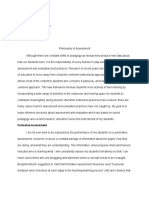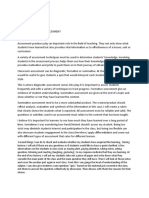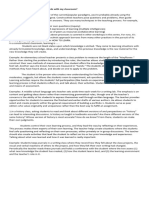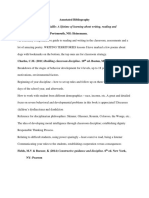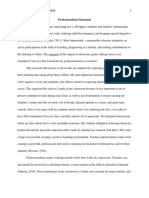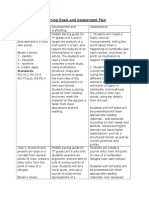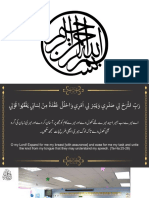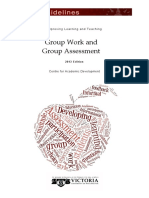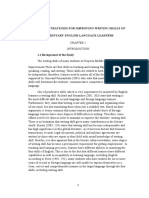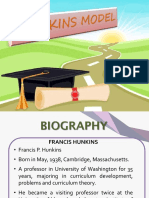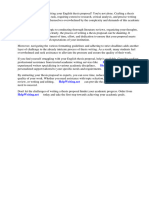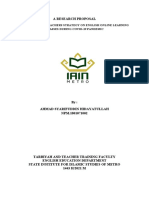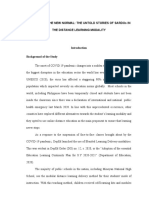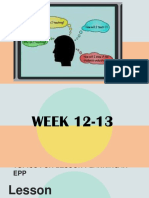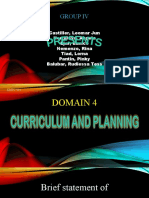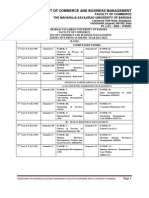ANISIMOVA MASTER’S PORTFOLIO 1
Learning Statement
I know that in order to be a successful teacher, I need to enable my students to learn and
take measure of what they are learning in order to use that data to reflect on my strengths as an
instructor and how I can improve (Harvey & Goudvis, 2007). These outcomes require effective
methods of assessment, which must be a part of lesson planning from the very beginning (Taylor
& Nolen, 2008). In my analysis of student learning of the material in my Clay Marble Unit, I
used assessments to test their retention of the material, created data from those results, and
revised my teaching methods and materials accordingly. In using data from my pre- and post-
assessments, I was able to compare the growth of various students, see where they had made the
most gains, and check to see that my learning goals for the students were evident in their work.
My data also allowed me to alter my teaching practice, because I saw that the students were most
engaged and retained more information when working on project-based lessons that required
them to make personal connections.
Studies show that students learn more in the courses that test than in those that do not
(Slavin, 2015). Testing can be a way for students to measure their own success and improve their
motivation. Tests must include feedback along with the grades to give students an opportunity to
learn the correct material. Students depend on feedback to know whether they have learned the
required material (Taylor & Nolen, 2008). Perrone (1991) makes the point that if the students are
to take the grades seriously, they need to know that their works are being read thoroughly.
In my assessment of student learning of the Clay Marble, I gave a rubric for every
assignment so each student knew exactly which part of their work needed improvement. Each
assignment had a clear purpose and target goal in relation to the standards (O’Connor, 2009).
This allowed me to make my rubrics concise and detailed. Slavin (2015) says, “Success should
�ANISIMOVA MASTER’S PORTFOLIO 2
be specified as clearly as possible.” I also allowed the students multiple attempts to revise and
resubmit their work, as is consistent with a standards-based focus on using assessments to
support student learning (Taylor & Nolen, 2008).
My unit on the Clay Marble, as well as my other lesson plans, include many types of
assessments that are meant to do more than just improve my instruction. I use a variety of formal
and informal assessments such as class discussions, writing samples, and observing student
behavior (Harvey & Goudvis, 2007). My pre-assessment, aimed to see how much the students
knew about Cambodia and the ongoing warfare that has devastated that region, was an informal
class discussion where the students partnered up to talk about what war means, what a refugee
camp may look like, where they might be located. This helped me understand what knowledge
gaps the students may have, so I could make sure to cover the material fully and scaffold their
knowledge (Taylor & Nolen, 2008). Students used self-assessment and peer-assessment (Taylor
& Nolen, 2008) when they applied the rubrics to their own work, and then gave guided
constructive feedback to their peers.
Individual discussions with students, as well as listening to partner discussions, allowed
me to make informal assessments (Taylor & Nolen, 2008). I used an assessment of learning in
progress (Taylor & Nolen, 2008) with every rubric for each of the projects such as “Diary of a
Refugee” and “Cambodia PSA” to review the retention of material. The Cambodia Student
Journal was my summative assessment (Taylor & Nolen, 2008), and included a rubric for each
project. Finally, there was also an individual post-assessment in the form of a quiz.
While benchmark assessments are a great way to see where the kids are in relation to the
curriculum (Slavin, 2015), I prefer to design my own units whenever possible to get students
genuinely involved in the process of inquiry, which is the true foundation of learning (Weaver,
�ANISIMOVA MASTER’S PORTFOLIO 3
2009). This makes learning in my class much different than when kids study for the purpose of
passing tests, which contain shallow, lower level thinking questions, and for many kids entails
learning the “tricks of testing” (Perrone, 1991). Instead, my assessments were based on activities
that used higher order structures from Bloom’s taxonomy to create a process of guided inquiry
into material involving real-world situations, making the lessons more engaging (Koechlin &
Zwaan, 2014). Students enjoy the process of exploring the unknown and answering questions
(Bass, Contant & Carin, 2009), which provides a great basis for my assessments.
In addition, timed tests do not allow the methodical students who work slowly to show
their best work (O’Connor, 2009). This problem is eliminated with a project-based assessment.
Rather, this type of project-based learning promotes students’ sense of independence and create
an atmosphere of joyful learning, which is conducive to retaining information for all different
types of learners (Tomlinson, 2014).
References
Bass, J., Contant, T., Carin, A. (2009). Teaching Science as Inquiry.(11th ed.) Boston, MA:
Pearson.
Harvey, S., Goudvis, A. (2007). Strategies That Work: Teaching Comprehension for
Understanding and Engagement.(2nd ed.) Portland, ME: Stenhouse.
Koechlin, C., Zwaan, S. (2014). Q Tasks: How to empower Students to Ask Questions and Care
About the Answers. (2nd ed.) Markham, Ontario, Canada: Pembroke.
O’Connor, K. (2009). How to Grade for Learning: K-12. 3rd Ed. Thousand Oaks, CA: Corwin.
Perrone, V. (1991). A Letter to Teachers. San Francisco, CA: John Wiley & Sons
Slavin, R.E. (2015) Educational Psychology. Upper Saddle River, NJ: Pearson.
Taylor, C., Nolen, S.B. (2008). Classroom Assessment: Supporting Teaching and Learning in
�ANISIMOVA MASTER’S PORTFOLIO 4
Real Classrooms. 2nd ed. Upper Saddle River, NJ: Pearson.
Tomlinson, C. (2014) Differentiated Classrooms: Responding to the Needs of All Learners. 2nd
ed. Alexandria, VA: ASCD
Tulenko, J.D. (2002) Testing Our Schools. PBS Frontline, Program #2014 Original airdate:
March 28, 2002
Weaver, C. (2009). Reading process: Brief edition of reading process and practice (3rd ed.).
Portsmouth, NH: Heinemann Jones
